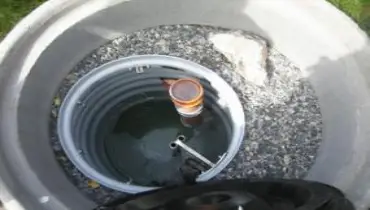
Those of us who have septic tanks often take them for granted, hoping they will just do their job quietly and efficiently. But because your septic tank system is vital to the health of your family, some septic tank information to help you understand the workings of the system could be useful.
Septic tank systems are used by nearly one-quarter of the population in the US. The septic tank itself is a large tank made of concrete, steel, or fiberglass that is buried in your yard. This tank might hold up to 1000 gallons (4,000 liters) of water and its purpose is to store sewage from your home while it settles.
Wastewater from the house enters the tank at one end and exits at the other. During the settling process, the waste separates into three layers. Anything that floats will rise to the top and form a “scum layer”. Anything heavier than water sinks to the bottom and becomes the “sludge layer”. In the middle is a fairly clear water layer.
The waste in the septic tank system is broken down by bacteria. Some of these come from our bodies; more can be added to the tank to speed up the decomposition. As the breakdown occurs it produces gases which smell pretty bad! For this reason, your sinks and toilets have loops of pipe known as “p traps” which hold water in the lower loop and prevent sewer gases from coming back into the house. Instead, these unpleasant gases are diverted up a vent pipe and dispersed into the air.
As new water enters the tank, it displaces the water that’s already there, which flows out of the septic tank. Some septic tank systems are designed to send the wastewater to a treatment facility once the waste has been broken down. Other septic tank systems send the water through a drain field made of perforated pipes buried in trenches filled with gravel.
The drain field is a vital part of every septic tank system. It slowly absorbs and filters the water from the septic tank and finally delivers clean water back to the water table.
When it comes to septic tank information you should be aware that, depending on the size of your household, you may need to empty your septic tank every 2 to 3 years (or at least have it checked by a septic tank service company). A rule of thumb is once every 3 years for a 1,000-gallon tank serving a 3-bedroom home with 4 occupants (and with no garbage disposal).

